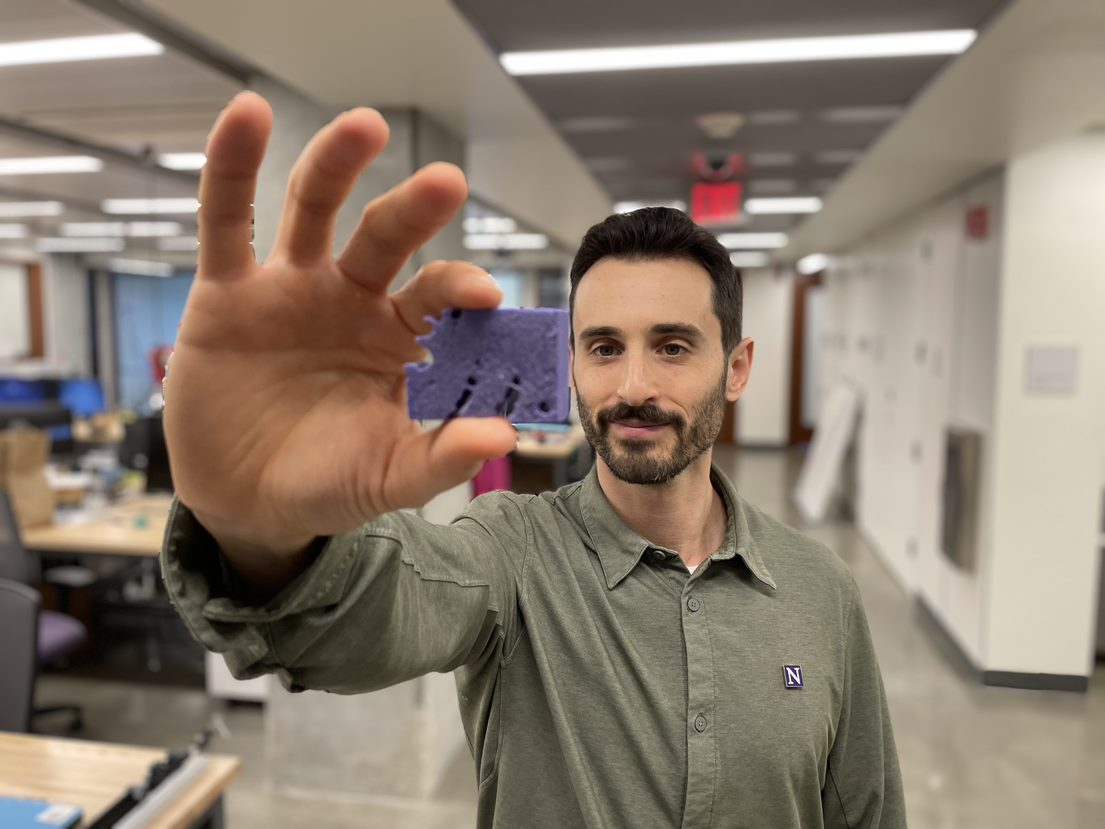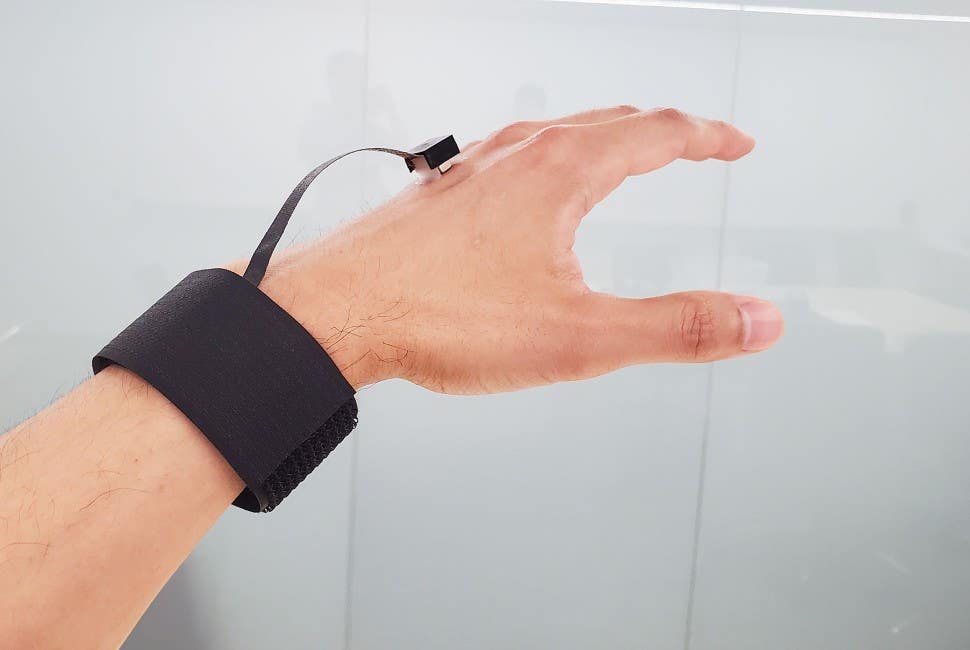Intelligent Design: AI designs new robot from scratch in seconds
Researchers have unveiled the first artificial intelligence (AI) capable of designing robots autonomously in mere seconds.

[Oct. 25, 2023: Staff Writer, The Brighter Side of News]
Sam Kriegman shows one of the robots. (CREDIT: Northwestern University)
In a groundbreaking achievement, researchers from Northwestern University have unveiled the first artificial intelligence (AI) capable of designing robots autonomously, a feat that compresses billions of years of natural evolution into mere seconds.
This novel AI system was tasked with a seemingly basic assignment: to design a robot capable of walking on a flat surface. The outcome was astonishing. In the blink of an eye, the AI developed a walking robot, taking significantly less time than the extensive eons nature took to evolve walking species.
Sam Kriegman, who headed this pioneering work, remarked, “We discovered a very fast AI-driven design algorithm that bypasses the traffic jams of evolution, without falling back on the bias of human designers.” He continued, “It generated a blueprint for a robot in the blink of an eye that looks nothing like any animal that has ever walked the earth. I call this process ‘instant evolution.’”
Unlike many of its peers that necessitate vast datasets and power-guzzling supercomputers, this AI system is lightweight and can run on an ordinary personal computer. Traditional AI designs often echo human past creations, remaining bound by human imaginative constraints. In stark contrast, Northwestern's AI births entirely unique structures, unfettered by prior designs.
Related Stories
“When people look at this robot, they might see a useless gadget. I see the birth of a brand-new organism,” Kriegman passionately commented.
The research findings were unveiled on October 3 in the Proceedings of the National Academy of Sciences. Kriegman, who holds positions in computer science, mechanical engineering, and chemical and biological engineering at Northwestern’s McCormick School of Engineering, collaborated with David Matthews, Andrew Spielberg and Daniela Rus of the Massachusetts Institute of Technology, and Josh Bongard from the University of Vermont.
Kriegman’s foray into revolutionary robotics isn’t new. In 2020, he attracted media attention for crafting xenobots, the first-ever living robots composed solely of biological cells. The newly developed AI, according to Kriegman, represents a monumental leap in the quest to harness the potential of artificial life.
While it took nature billions of years to evolve the first walking species, the new algorithm compressed evolution to lightning speed. (CREDIT: Northwestern University)
Beginning with a rudimentary, soap-bar-sized block, the AI embarked on its designing journey. Each design iteration was a meticulous exercise, wherein the AI evaluated, identified imperfections, and made adjustments. After just nine iterations, in a mere 26 seconds, a walking robot emerged, achieving a speed equivalent to half the average human stride.
Interestingly, the AI, without any directive, mirrored nature's walking solution: legs. However, in a departure from symmetrical designs seen in nature, the AI's creation sported three legs, fins, a flat face, and a plethora of holes.
The inside of the robot contains "air muscles," as shown on the left. (CREDIT: Northwestern University)
Kriegman remarked, “It’s interesting because we didn’t tell the AI that a robot should have legs.” He elaborated, “It rediscovered that legs are a good way to move around on land. Legged locomotion is, in fact, the most efficient form of terrestrial movement.”
To verify the robot’s functionality, the team 3D-printed a mold of the robot’s negative space, filled it with liquid silicone rubber, and subsequently observed its air-pumped locomotion. The robot’s perforated design, while intriguing, was found vital for its walking capability.
Kriegman further noted, “When humans design robots, we tend to design them to look like familiar objects. But AI can create new possibilities and new paths forward that humans have never even considered.”
Beyond this groundbreaking design, Kriegman envisions a plethora of AI-designed tools that can address myriad challenges — from navigating collapsed buildings for rescue missions to designing nanobots for advanced medical treatments.
Using the AI-designed blueprint, a 3D printer prints molds for the robots. (CREDIT: Northwestern University)
“The only thing standing in our way of these new tools and therapies is that we have no idea how to design them,” concluded Kriegman. “Lucky for us, AI has ideas of its own.”
Tweet this quote: “When people look at this robot, they might see a useless gadget. I see the birth of a brand-new organism.” — Sam Kriegman.
For more science and technology news stories check out our New Innovations section at The Brighter Side of News.
Note: Materials provided above by The Brighter Side of News. Content may be edited for style and length.
Like these kind of feel good stories? Get the Brighter Side of News' newsletter.
Joseph Shavit
Head Science News Writer | Communicating Innovation & Discovery
Based in Los Angeles, Joseph Shavit is an accomplished science journalist, head science news writer and co-founder at The Brighter Side of News, where he translates cutting-edge discoveries into compelling stories for a broad audience. With a strong background spanning science, business, product management, media leadership, and entrepreneurship, Joseph brings a unique perspective to science communication. His expertise allows him to uncover the intersection of technological advancements and market potential, shedding light on how groundbreaking research evolves into transformative products and industries.



